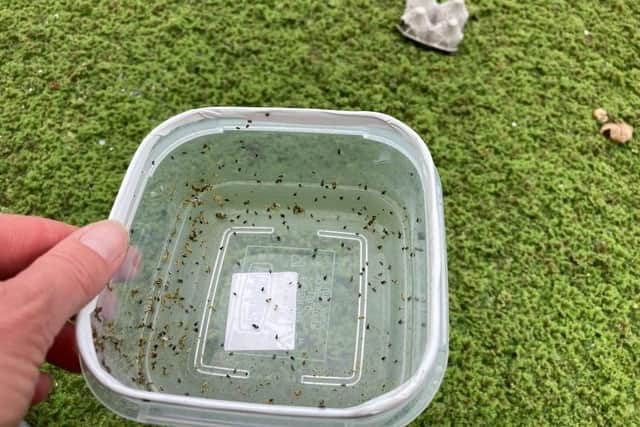Thousands of weed-munching weevils released to remove thick green carpet of water fern from Lancaster Canal
and live on Freeview channel 276
The Lancaster Canal, which winds its way through the city, began to resemble a thick green carpet of grass by the end of June.
Many residents speculated what was causing the river to turn green, with many believing it was a duckweed – tiny, free-floating, aquatic plants.
Advertisement
Hide AdAdvertisement
Hide AdBut the Canal & River Trust (CRT), which cares for 2,000 miles of canals, said the cause was actually water fern (azolla filiculoides).
A spokeswoman said: “Trust ecologists are aware of the problem and will be employing the usual control methods to try and remove it.
“We’re currently releasing the weevils into the canal which will help combat the problem.”
The 2mm-long beetles feed on the azolla plants – which are originally native to North and Central America.


Advertisement
Hide AdAdvertisement
Hide AdAble to withstand British winters, water fern spreads like a sponge across the water and can double in area within a few days.
This reduces light beneath the surface and shades out other native plants, as well as causing deoxygenation, leading to the death of fish.
It also poses a hazard by appearing solid.
Dog walkers and boat dwellers have been told that the plant is not harmful to people or animals, but it can clog up the rudders and steering mechanisms of barges.
The plant is entirely free-floating and so able to grow in any depths, but the water must be still or slow moving for it to properly thrive.
“As with all natural vegetation management, solutions are often not quick and easy,” the spokeswoman added.
